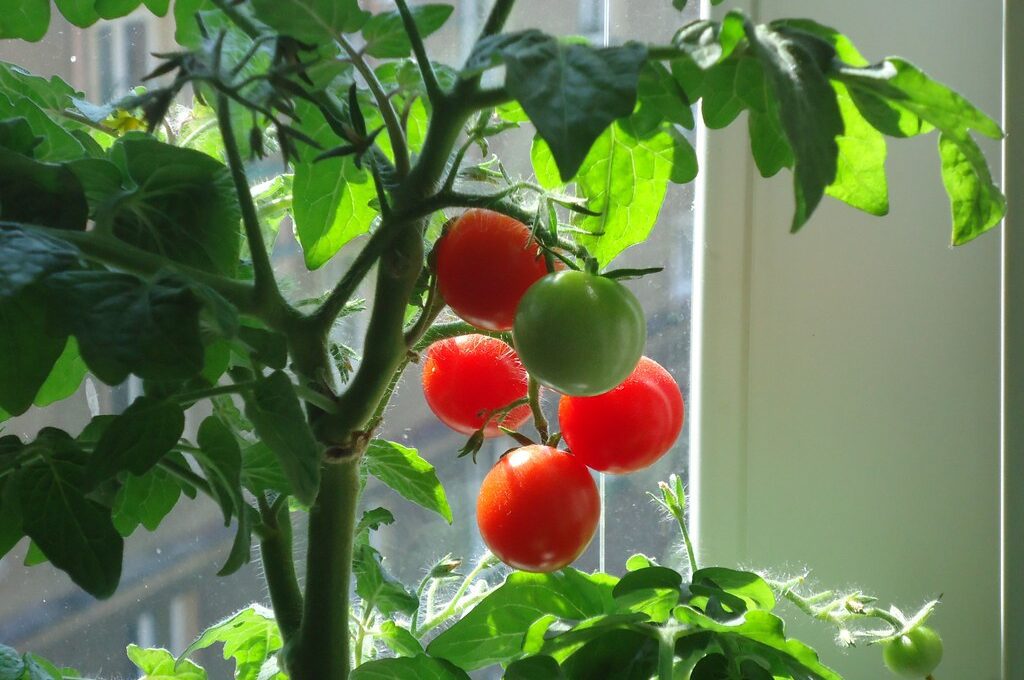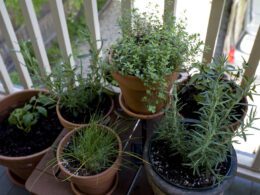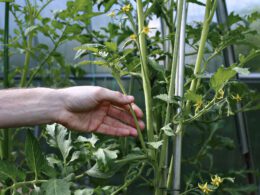Are you looking for a natural and cost-effective way to give your tomato plants a boost? You might be surprised to learn that those seemingly useless banana peels could be the secret ingredient your garden needs.
Rich in essential nutrients, banana peels can provide your tomato plants with the nourishment they need to thrive, all while keeping your gardening practices eco-friendly. However, as with any gardening technique, it’s important to understand the potential drawbacks of using banana peels and how best to incorporate them into your plant care routine.
This article will discuss the nutritional benefits of banana peels, their effectiveness for supporting tomato plant growth, potential concerns you should be aware of, and alternative options if needed.
So let’s dive in and explore how these humble fruit scraps can help keep your tomatoes happy and healthy!
Nutritional Benefits of Banana Peels
You might be surprised to learn that your kitchen waste can have some amazing perks for your garden’s health! Banana peels, in particular, are a fantastic source of nutrients for tomato plants. They’re rich in potassium, phosphorus, calcium, and magnesium, which help promote strong root growth and overall plant health. Plus, they’re an excellent source of micronutrients like manganese and sulfur that aid in the prevention of various plant diseases.
Now imagine how much money you’ll save on expensive fertilizers by simply recycling these nutrient-dense banana peels into your garden soil. To do this effectively, chop up the peels into small pieces or blend them before burying them around your tomato plants. As they decompose over time, all those valuable nutrients will slowly release into the soil and provide a steady supply of nourishment for your beloved tomatoes.
So next time you enjoy a delicious banana snack, don’t toss out that peel! Instead, give it a second life by feeding it to your hungry tomato plants. Not only will you be reaping the nutritional benefits of this natural fertilizer for your garden, but you’ll also be contributing to a more sustainable way of growing food – one that keeps both you and Mother Nature safe and happy!
How Banana Peels Benefit Tomato Plants
You might not realize it, but banana peels can greatly benefit your tomato plants in several ways. By promoting flowering and fruiting, improving soil structure, and preventing nutrient deficiencies, you’ll be giving your tomatoes the best chance to thrive.
So next time you enjoy a banana, don’t toss that peel – your tomato plants will thank you!
Promoting Flowering and Fruiting
By enriching the soil around your garden with discarded fruit casings, you can encourage blossoming and bountiful harvests. Banana peels are packed with nutrients that tomato plants crave, like potassium, phosphorus, calcium, and magnesium. These elements promote healthy growth and support flower production and fruit development.
Here are some ways banana peels can impact your tomato plants:
- Abundant blossoms: More flowers mean more opportunities for pollinators to visit your garden.
- Larger fruits: The nutrient boost from banana peels helps tomatoes grow bigger and juicier.
- Vibrant colors: Your tomatoes will boast rich reds or vibrant yellows thanks to improved nutrient uptake.
- Stronger stems: A well-fed tomato plant develops sturdy support structures for its heavy fruits.
- Enhanced flavor: The added minerals contribute to a more delicious taste in every bite.
So, next time you’re enjoying a banana or making a smoothie, remember that those peels hold untapped potential for creating an impressive and safe haven for your precious tomato plants!
Improving Soil Structure
Don’t underestimate the power of those discarded fruit casings, as they can work wonders in enhancing your garden’s soil structure too!
Banana peels are packed with nutrients like potassium, calcium, and phosphorus that help improve the overall health and texture of your soil. When you bury them in your garden bed or add them to your compost pile, these nutrients slowly release into the soil, enriching it over time. This not only creates a more fertile environment for your tomato plants but also promotes better water retention and drainage.
As an added bonus, using banana peels to improve your soil structure is an eco-friendly way to recycle waste while keeping potentially harmful chemicals out of your garden. By incorporating this natural technique into your gardening routine, you’re contributing to a safer and healthier environment for both yourself and future generations.
So don’t toss those banana peels away – put them to good use by adding them to your tomato plant’s home for a thriving garden that benefits everyone involved!
Preventing Nutrient Deficiencies
Incorporating those fruit casings into your garden can also help ward off nutrient deficiencies, ensuring a healthier and more bountiful harvest for you to enjoy.
Banana peels are packed with essential nutrients like potassium, phosphorus, calcium, and magnesium that tomato plants need for optimal growth. By composting or directly burying the peels near your tomato plants, you provide them with a slow-release source of these vital elements. This not only keeps your tomatoes in tip-top shape but also means less worry about having to use chemical fertilizers.
Moreover, preventing nutrient deficiencies in your tomato plants will result in stronger, more resilient crops that are less susceptible to pests and diseases. This means fewer headaches for you as a gardener and more peace of mind knowing that your homegrown tomatoes are safe and healthy for consumption.
So go ahead – toss those banana peels into the mix – it’s an easy way to improve the overall well-being of your garden while keeping both yourself and Mother Nature happy!
Potential Drawbacks of Using Banana Peels
While it may seem like a smart idea, there are some potential drawbacks to using this fruit’s outer layer in your garden. One concern is the possibility of attracting pests. Banana peels can draw in unwanted critters such as rodents, insects, and even raccoons if not properly buried or composted. These animals might feast on the peels and then move on to munch on your precious tomato plants, defeating the purpose of using banana peels as a nutrient source.
Another issue you should be aware of is that banana peels can carry diseases. Since bananas are often grown in tropical climates with high humidity and rainfall, they can harbor fungal pathogens that cause diseases like Anthracnose or Panama disease. While these illnesses primarily affect bananas themselves, they could potentially spread to other plants in your garden if introduced through decaying banana peels.
To minimize these risks while still reaping the benefits of banana peels for your tomato plants, consider composting them first before adding them to your garden soil. This process will help break down the organic matter and eliminate any potential pathogens or pests lurking within the peel. By doing so, you’ll provide a safe environment for your tomato plants to flourish without putting them at risk for harm from unwanted visitors or diseases.
Do Black Seeds in Tomatoes Pose any Risk to Tomato Plants?
Black seeds in tomatoes do not pose any risk to tomato plants. In fact, these seeds are a natural part of tomato fruits and are responsible for their reproduction. These seeds contain essential genetic information that helps in the growth and development of future tomato plants. Moreover, removing or discarding these seeds may not be necessary as they do not harm the plants in any way.
Effective Methods for Using Banana Peels
Imagine enriching your garden’s soil with that seemingly useless fruit skin, providing essential nutrients for your thriving tomatoes. Banana peels can be a fantastic addition to your tomato plants’ diet if used correctly.
One effective method is chopping up the peels and burying them in the soil near the base of your tomato plants. This allows the peels to break down gradually, releasing potassium, calcium, magnesium, and other essential nutrients into the soil over time.
Another method you can try is making banana peel tea fertilizer. Simply soak several chopped-up banana peels in a gallon of water for a few days before straining out the liquid. This nutritious concoction can then be used as a liquid fertilizer by watering your tomato plants with it once every couple of weeks during their growing season. The extra potassium boost can help improve plant health and promote better fruit development.
Using banana peels as mulch around your tomato plants is another excellent option worth considering. Spread small pieces of dried or fresh banana peels on top of the soil surrounding your tomatoes without letting them touch the stems directly. Doing so helps retain moisture in the soil while also releasing valuable nutrients as they decompose – all while protecting against weeds that compete for those same resources!
With these methods at hand, you’ll not only put those old banana skins to good use but also ensure a healthy environment for your precious tomatoes to thrive in safely and effectively.
Alternatives to Banana Peels for Tomato Plants
Don’t fret if you’re fresh out of banana skins; there are plenty of other ways to give your tomatoes the tender love and care they deserve while nurturing their growth!
One such alternative is using crushed eggshells as a source of calcium, which helps in developing strong cell walls and preventing blossom end rot. To do this, simply rinse and crush the eggshells, then sprinkle them around the base of your tomato plants. This will not only provide essential nutrients but also help deter slugs and snails from nibbling on your precious crops.
Another great option for boosting your tomato plants’ health is by adding coffee grounds to the soil. Coffee grounds are rich in nitrogen, potassium, phosphorus, and other trace minerals that aid in plant growth. Moreover, they can help improve soil structure by increasing its water retention capacity and attracting beneficial microorganisms. To use coffee grounds for your tomatoes, just sprinkle them lightly around the base of each plant or mix them into your compost pile.
One more effective alternative to banana peels is using Epsom salt as a natural supplement for tomato plants. Epsom salt contains magnesium sulfate that improves seed germination, nutrient absorption, and overall plant health. To apply Epsom salt to your tomato garden, simply dissolve two tablespoons per gallon of water in a watering can or spray bottle. Then drench the soil around each plant with this solution once every four weeks during the growing season.
By incorporating these alternatives into your gardening routine, you’ll be well on your way to growing healthy and robust tomato plants without relying solely on banana peels!
Conclusion
So, you’ve learned that banana peels can indeed be beneficial for your tomato plants. They provide essential nutrients and help improve overall plant health, but be mindful of potential drawbacks like pests.
Feel free to give it a try and see how your tomatoes respond. If you’re not keen on using banana peels, there are other alternatives available to nourish your plants.
Happy gardening!









